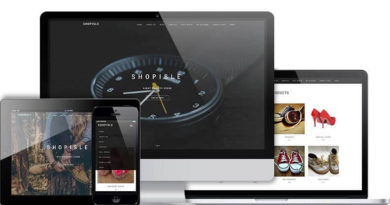9 A/B Split Tests To Boost Ecommerce Conversion Rates
If you have run a website, you probably have clear goals in mind, whether they’re for sales, leads, branding or otherwise. Regardless of what the goals actually are, if you’re not optimizing the site to reach those goals, you’re leaving a lot of money on the table in lost efficiencies.
This is especially important for all ecommerce websites, from the newly launched to the large and established. If you’re only converting 0.5% of your visitors to sales, but 1.5% is easily achievable with a few tweaks, you’re essentially only generating one-third of the revenue you should be doing. And when each web visitor is more valuable, you can invest more money in getting more visitors to your site. So not only are you converting a higher number of visitors into customers, but you’re also seeing more visitors in general– and the positively reinforcing upward spiral of ecommerce growth continues.
But how do you determine what to tweak to improve conversion rates? By A/B split testing. You essentially build two different versions of the same page on your website, and software sends half the visitors to one version and half the visitors to the other and then tracks which version leads to the most goals achieved. If you test big enough changes between the two pages, chances are one version will yield much better results than the other. Then you just take the best version, and use that as the starting point for a new split test and run another test, and then you repeat the process again and again until you have a very high conversion rate.
Optimizely is my choice of A/B split testing software for a number of reasons–
- It’s free up to a certain point
- You can filter out internal traffic so you don’t skew the data
- It lets you know when you have a statistically-significant winning version
- It’s easy to set up and use
Lots of people like to get fancy by testing small things like button colors and small phrases, but those will only get you to what statisticians like to call the “local maximum”, and might only yield an extra hundredths of a percent improvement on your conversion rate. And if you’re not seeing substantial traffic to your website, that increase in conversion rate will not even be noticeable. Instead, the key to split testing is to start off testing massive changes and then moving to smaller and smaller tests.
If you are unsure of where to start A/B split testing, or if you’ve ran tests before and didn’t see any results, here’s a list of 9 great places to start testing, using my business RawAthletics.com as an example–
A/B Split Test #1 — Page Layout
As mentioned before, you need to test massive changes to a website in order to see massive improvements in conversion rates. One of the biggest things you can test is the overall layout– What does the visitor see first? What section is emphasized the most? Or even better, testing a completely different template or theme altogether.
A/B Split Test #2 — Product Title

The name of your product can make or break your conversion rate– Is it too long? Is it too short? Is it too descriptive and limiting your market? Is it too broad and not conveying your value properly? These are all things that need to be considered.
A/B Split Test #3 — Product Price
This is a big one. The problem is, there’s no straightforward and easy way to split test pricing. The way I’ve always done it is to choose the two prices you want to test — either one way lower and one way higher, or one that ends in a .97 vs .00, etc — and then make the REAL price in your system the lower price. The reason to do this is because if someone goes through the process and sees a much higher price in checkout, they will be upset, and they may have recourse against you for false advertising. But everyone would be ok with paying a lower price than they were expecting. The secret here is to not track sales, but instead run the test on the product page and then test the number of people that click ‘add to cart’.
A/B Split Test #4 — Video vs No Video
Having an explainer video can be a huge boom to your conversion rate, or a huge distraction to the visitor. A lot will depend on the quality of the video, the length of the video, where the video is located on your page, and if your product or service is even a good candidate for an explainer video in the first place. The first test should be whether to have a video or not. If it’s determined that having a video on your product or homepage does boost conversion rates, then the next step would be testing where to put the video. If the initial test didn’t yield great results, you can always test a new video, or test placing the video on a different spot on your website.
A/B Split Test #5 — Header Title

The header of a page is usually a main focal point that conveys a value proposition. Testing value propositions or focal points alone usually yield great results, so testing an aspect of your website that is both will certainly yield results. You might have to think outside of the box to come up with ideas, and definitely don’t be afraid to test some strange things. Maybe testing the tone of the message– from humorous to corporate. Or testing a value proposition versus a slogan.
A/B Split Test #6 — Product Images
People respond to visuals. Testing a normal white background product image versus an action shot with a full background might yield surprising results. Also, including a person in the product image versus not including a person in the image has been known to yield interesting results as well.
A/B Split Test #7 — Lots of info vs very little info
Sometimes its more effective to unleash as much information and data on a potential customer as possible, and sometimes it’s best to keep your description to a few brief bullet points. This is something that can and should be tested, and is highly dependent on what you’re selling. If you do determine that you’re better suited for a long-form product page, you can then experiment with how it’s laid out as well as what sections come first, which goes back to Split Test #1.
A/B Split Test #8 — Hellobar vs no Hello Bar
Hellobar is one of my favorite tools for a number of reasons. First, they themselves have a native A/B split testing feature, so you can test different wording and phrasing to your web visitors very easily. But it’s also a great way to get a short message across to your web visitors since it’s so prominent. Because it’s activated by a short javascript snippet, you can use Optimizely to have that snippet appear on one version of a webpage but not another, and see how it affects other metrics on your website, including conversion rate. If you follow this route though, be sure to only have one version of the Hellobar running at that time as opposed to having Hellobar also be split testing something, in order to keep things consistent and to control your variables for the most accurate data.
A/B Split Test #9 — Pushing visitors from blog into sales funnel

Content marketing is so important for any ecommerce website. One of the key benefits is to provide yourself with interesting content to share on social media. But the ultimate goal of sharing your content on social media isn’t just to get pageviews, but to convert visitors to customers. This is notoriously difficult, but can be made easier if you split test how to transition people from your content pages into your sales funnel. Some ideas are to add testimonials or product links above the content, to use a Hellobar at the top of the page, or so somehow collect emails to enter them into an email drip campaign.
There you have it, 9 go-to A/B split tests for ecommerce websites. Obviously each website and each product will have unique circumstances, but I hope this gets the creative juices flowing and helps you set up some successful tests for your website!



